Great Belt Fixed Link
The Great Belt Fixed Link is the fixed link between the Danish islands of Zealand and Funen across the Great Belt. It consists of a road suspension bridge and railway tunnel between Zealand and the island Sprogo, as well as a box girder bridge between Sprogo and Funen.
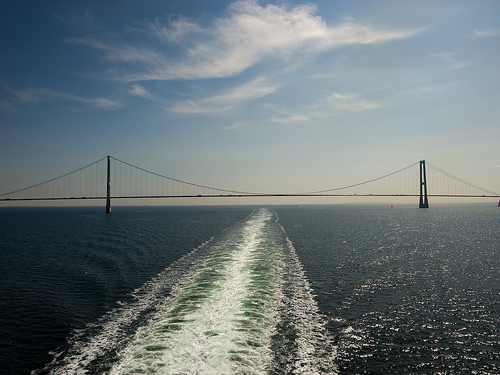
The Great Belt Fixed Link
Official name Ostbroen
Carries Motor vehicles
Crosses Great Belt
Design Suspension bridge
Piers in water 19
Total length 6,790 metres (22,277 ft)
Width 31 metres (102 ft)
Height 254 metres (833 ft)
Longest span 1,624 metres (5,328 ft)
Clearance below 65 metres (213 ft)
Opening date June 14, 1998
It consists of a road suspension bridge and railway tunnel between Zealand and the island Sprogo, as well as a box girder bridge between Sprogo and Funen. The "Great Belt Bridge" commonly refers to the suspension bridge, although it may also be used to mean the beam bridge or the link in its entirety. The suspension bridge, known as the East Bridge, has the world's third longest main span (1.6 km). It is designed by the Danish architectural practice Dissing + Weitling.
The link replaces the ferry service which had been the primary means of crossing Great Belt for more than 100 years. After more than five decades of speculation and debate, the decision to construct the link was made in 1986; while it was originally intended to complete the railway link three years before opening the road connection, the link was opened to rail traffic in 1997 and road traffic in 1998. At an estimated cost of DKK 21.4 billion (1988 prices), the link is the largest construction project in Danish history.
The link has reduced travel times significantly; previously taking about an hour by ferry, the Great Belt can now be crossed in about 10 minutes. The construction of the Great Belt Fixed Link and the Oresund Bridge have, together, enabled one to drive from Mainland Europe to Sweden and the rest of Scandinavia through Denmark, greatly shortening the alternative land route through Finland.
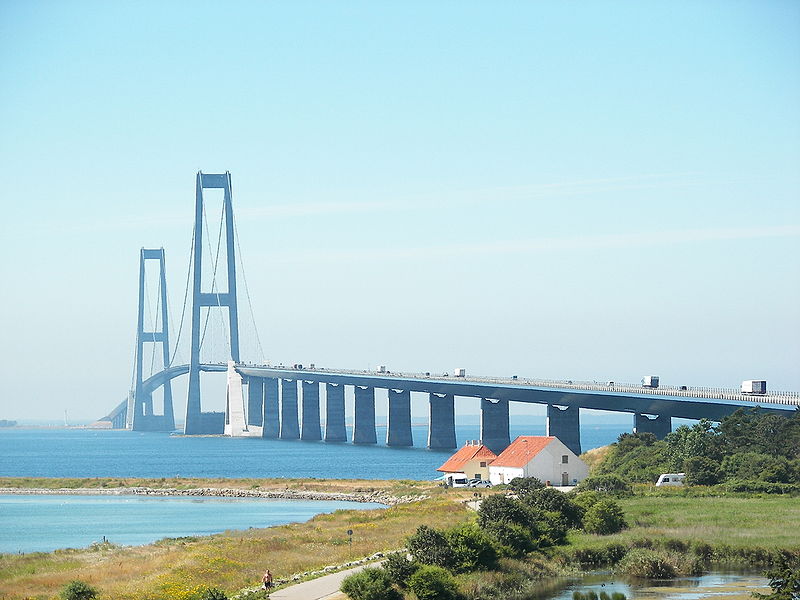
Construction
The construction of the fixed link across the Great Belt became the biggest building project ever in the history of Denmark. In order to connect Halsskov on Zealand with Knudshoved on Funen, 18 kilometres to its west, a two-track railway and a four-lane motorway had to be built, aligned via the small island Sprogo in the middle of the Great Belt. In general terms, the project comprised three different construction tasks: The East Bridge for road transport, the East Tunnel for rail transport and the West Bridge for road and rail transport combined.
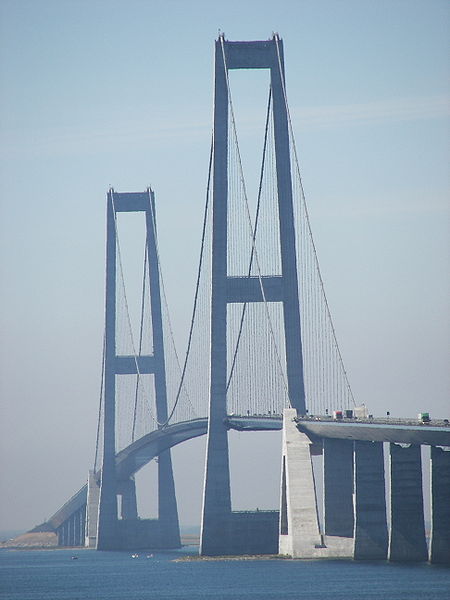
The East Bridge
Built between 1991 and 1998, the East Bridge is a road suspension bridge between Halsskov and Sprogo. It is 6,790 metres (22,277 ft) long with a free span of 1,624 metres (5,328 ft),[2] making it the world's third-longest suspension bridge span, surpassed only by the Akashi-Kaikyo Bridge in Japan and the Xihoumen Bridge in China. The Akashi-Kaikyo Bridge was opened two months earlier. The East Bridge was assumed to be the longest at completion, but was delayed and so number two when opened. The vertical clearance for ships is 65 metres (213 ft).
At 254 metres (833 ft) above sea level, the two pylons of the East Bridge are the highest points on solid structures in Denmark. (Only some radio masts as Tommerup transmitter are taller).
To keep the main cables tensioned, an anchorage structure on each side of the span is placed below the road deck. Additionally, a total of 19 concrete pillars (12 on the Zealand side, 7 by Sprogo), each separated by a distance of 193 metres (633 ft), carry the road deck outside the span.
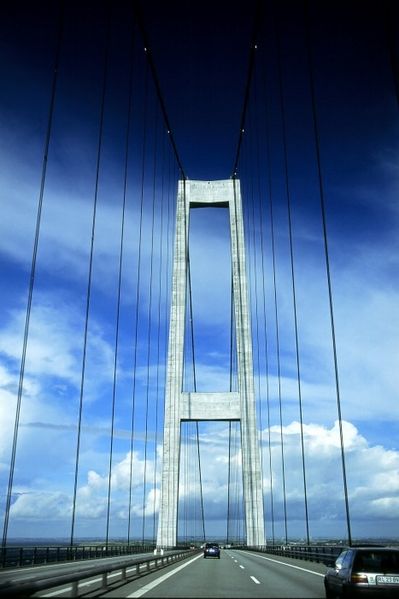
The West Bridge
The West Bridge is a box girder bridge between Sprogo and Knudshoved. It is 6,611 metres (21,690 ft) long, and has a vertical clearance for ships of 18 metres (59 ft). It is essentially two separate, adjacent bridges above water. The northern one carries rail traffic and the southern one carries road traffic. However, the pillars of the two bridges rest on common foundations below sea level. The West Bridge was built between 1988 and 1994; its road/rail deck comprises 63 sections, supported by 62 pillars.
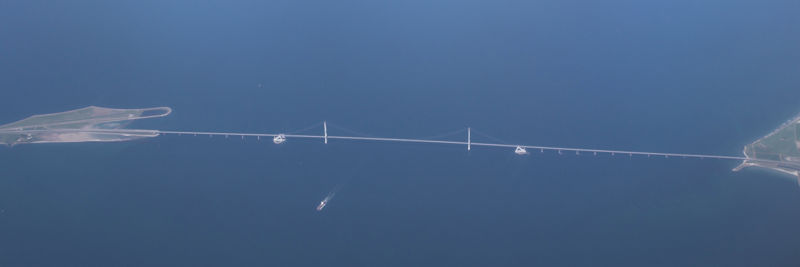
The tunnel
The twin bored tunnel tubes of the East Tunnel are 8,024 metres (4.986 mi) long each. Between the two main tunnels 31 connecting tunnels were placed at 250 metres (820 ft) intervals. The equipment that is necessary for train operation in the tunnels is installed in the connecting tunnels. The connecting tunnels also serve as emergency escape routes.
During construction of the tunnels, the sea bed gave way and one of the tunnel pipes was flooded. The water continued to rise and reached the end at Sprogo, where it continued into the (still dry) other tunnel pipe. The water thus destroyed two of the four drilling machines, but no workers were injured. Only by drilling refrigeration hoses down into the sea bed and freezing the bottom was it possible to dry out the pipes, remove the defunct machines and complete the drilling from the Zealand side.